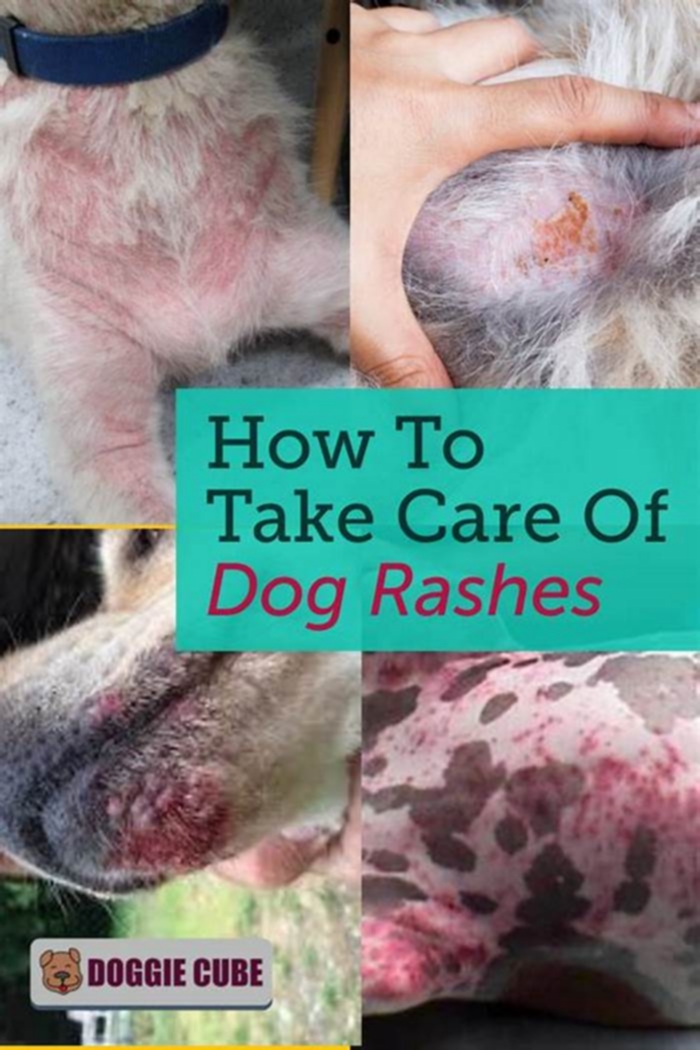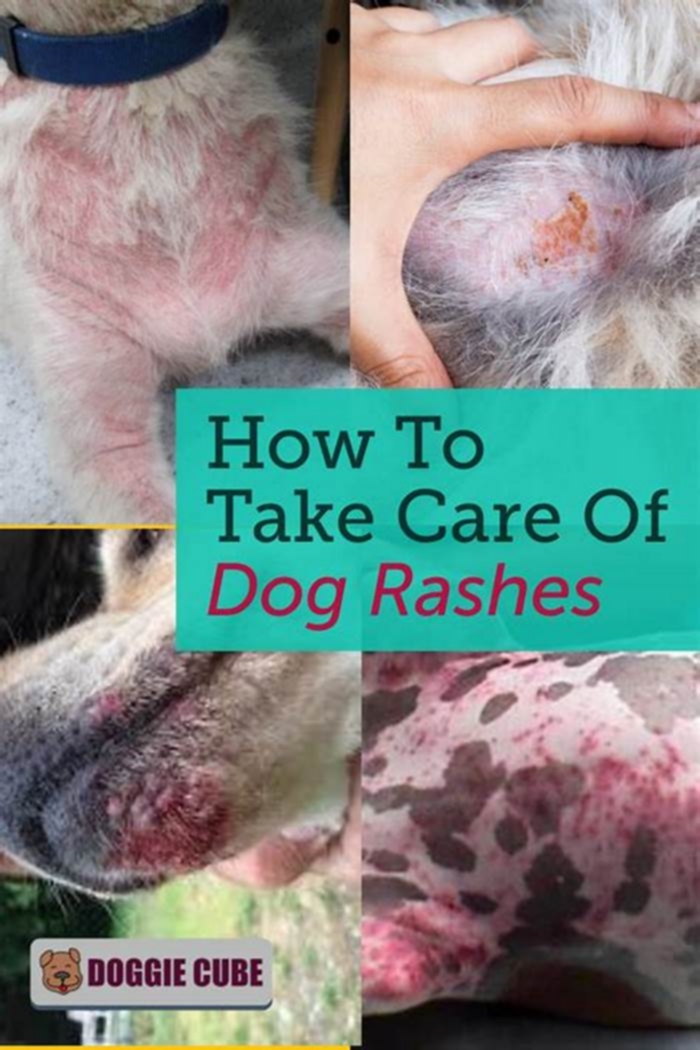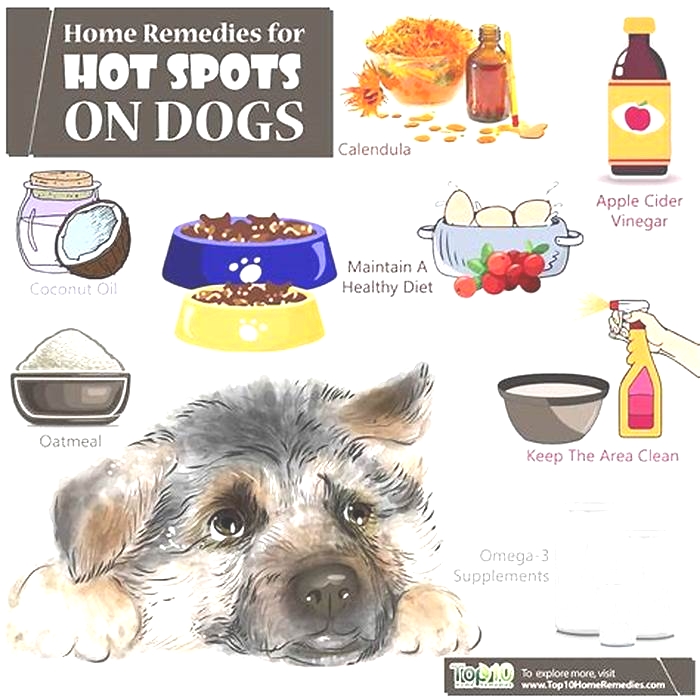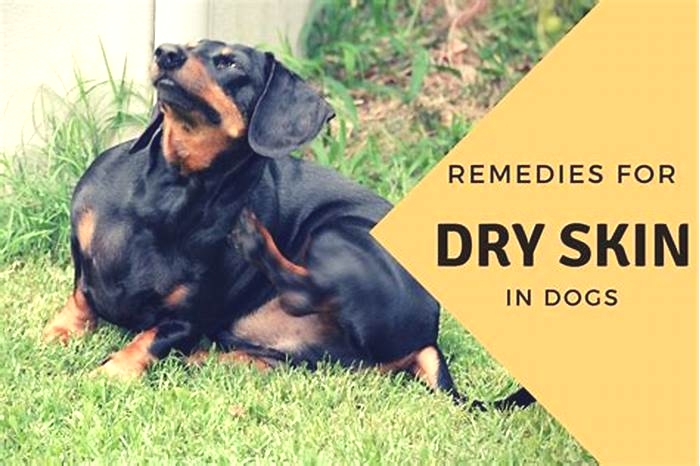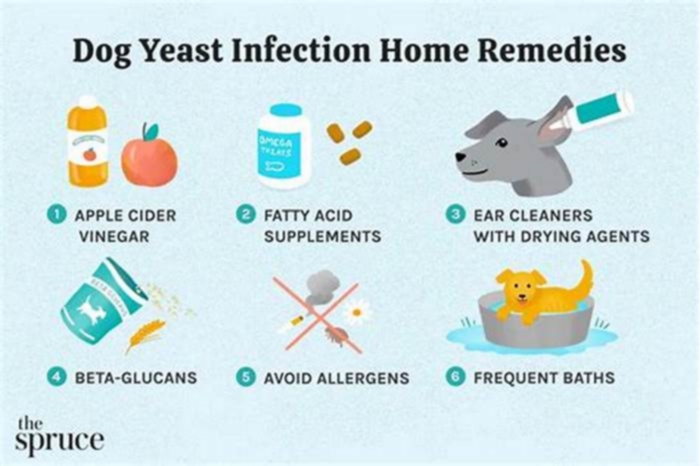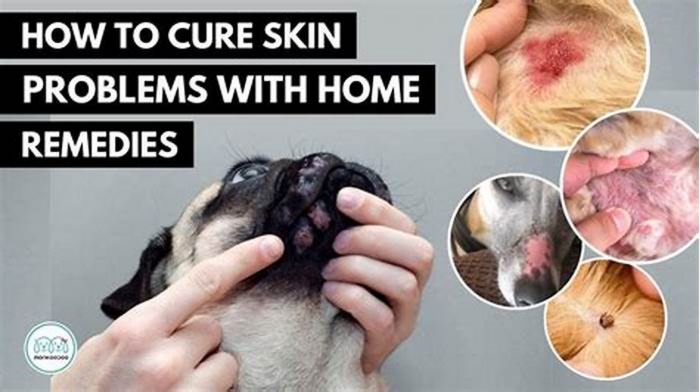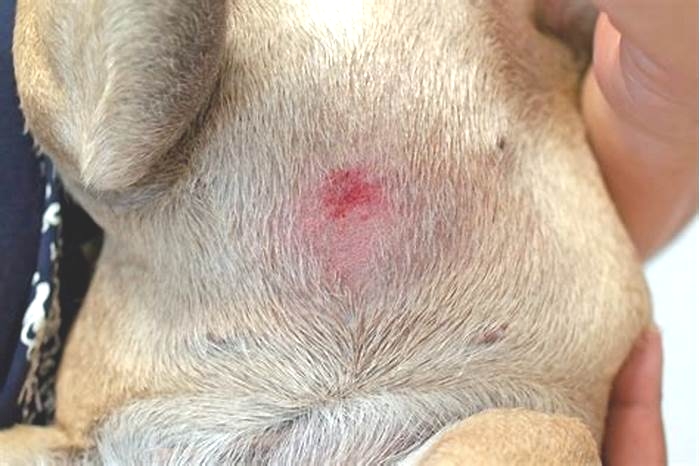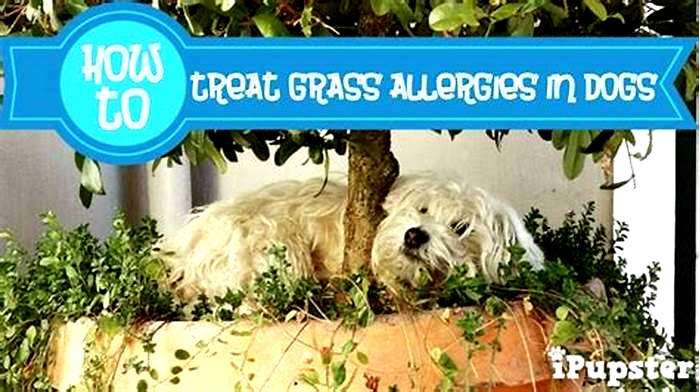How to treat a dog rash at home
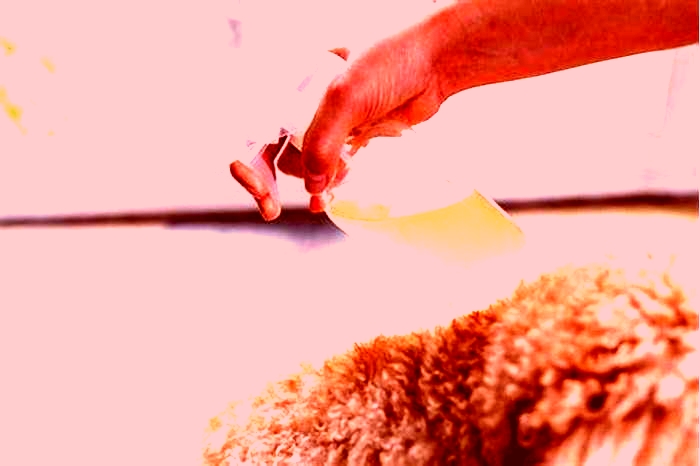
Soothing the Itch: Your Go-To Guide for Dog Rash Remedies at Home
Hey there, pet parents! If youve noticed your furry friend scratching more than usual or spotted some concerning rashes, youre in the right place. Were about to dive into the world of home remedies for dog rash treatment.
1. Cool Compresses: The Chill Factor
Pros: Easy to apply Provides immediate relief
Cons: Temporary solution May not address underlying causes
2. Oatmeal Baths: The Soothing Soak
Pros: Natural and gentle Helps soothe skin irritation
Cons: Messy and time-consuming Not suitable for all types of rashes
3. Aloe Vera: The Natural Healer
Pros: Anti-inflammatory properties Promotes healing
Cons: Some dogs may be allergic Requires careful application
4. Coconut Oil: The Tropical Touch
Pros: Moisturizes skin Antifungal and antibacterial
Cons: Can be messy Dogs might lick it off before it can work
5. Apple Cider Vinegar: The Acidity Advocate
Pros: Fights off pathogens Can help with hot spots
Cons: Must be diluted correctly Can irritate open wounds
6. Chamomile Tea: The Relaxing Rinse
Pros: Anti-inflammatory Can relieve itching
Cons: Effects are mild Frequent application needed
7. Witch Hazel: The Gentle Astringent
Pros: Soothes skin without drying Good for hot spots and insect bites
Cons: Not for deep or severe rashes Can be over-drying if overused
8. Baking Soda: The Mild Antiseptic
Pros: Reduces inflammation Can relieve itching
Cons: Can be drying Not to be ingested
9. Fish Oil Supplements: The Inside-Out Approach
Pros: Promotes skin health Can reduce inflammation
Cons: Takes time to see effects Possible dietary sensitivities
10. Dietary Adjustments: The Holistic Tweak
Pros: Addresses potential allergies Can improve overall skin health
Cons: Requires trial and error May need consultation with a vet
Now, remember, while these remedies can offer relief and aid in healing, theyre not all-encompassing cures. Its crucial to observe your dogs reaction to any new treatment and consult with a veterinarian if youre unsure about the cause of the rash or if it persists. After all, our furry companions rely on us to make the best decisions for their health and happiness.
In this guide, weve aimed to break down each option with the clarity and insight you need to navigate the world of home remedies. But lets keep the conversation going! Have you tried any of these methods? Or maybe you have a go-to remedy that didnt make our list? Share your experiences and tips in the comments below. Together, we can create a treasure trove of wisdom for pet parents everywhere!
Comment 1: Ive been using coconut oil for my dogs rash, and it seems to work, but he licks it off almost immediately. Any suggestions?
Ah, the classic coconut oil conundrum! Its a fantastic moisturizer and has antibacterial properties, but our canine friends often cant resist a little taste. One strategy is to apply the coconut oil right before meal times or a distracting play session. This way, your dog is preoccupied and less likely to lick it off immediately. Alternatively, consider using a light dog shirt or fabric wrap over the area (if its not too sensitive), creating a barrier while allowing the skin to breathe and the oil to absorb.
Comment 2: Is there a risk of using apple cider vinegar on my dogs skin? How can I make sure its safe?
Great question! Apple cider vinegar can be a powerful ally for skin issues but also has its risks if not used correctly. The key is dilution and caution. Always dilute apple cider vinegar with water, typically a ratio of 1 part vinegar to 3 parts water, to mitigate acidity and potential irritation. Test this solution on a small skin area first to observe any adverse reactions. Never apply it to open wounds or raw skin, as it can cause significant discomfort and potentially worsen the situation. If in doubt, consult with your vet for tailored advice.
Comment 3: My dog has a persistent rash that doesnt seem to respond to home remedies. What should I do?
Persistent rashes signal the need for professional intervention. While home remedies can be effective for minor irritations, a rash that remains or worsens is a red flag. This could indicate an underlying condition such as allergies, infections, or even hormonal imbalances that require specific treatments. Booking a vet appointment is crucial. Your vet can perform tests to pinpoint the exact cause and recommend treatments that might include prescription medications, dietary adjustments, or even allergy testing. Its also essential to consider the environment your dog is in allergens in the home, garden, or diet could be contributing factors.
Comment 4: I read about using fish oil supplements for skin health. How long before I see any improvements in my dogs skin condition?
Incorporating fish oil supplements for your dogs skin health is a commendable approach, given their anti-inflammatory properties and ability to promote a glossy coat. However, its a gradual process. Typically, you might start noticing improvements in your dogs skin and coat condition within 4 to 6 weeks of consistent supplementation. Its important to ensure youre administering the correct dosage based on your dogs weight and the products recommendations. Also, opt for high-quality fish oil supplements that are free from contaminants and specifically designed for pets to ensure safety and efficacy.
Comment 5: Can diet really affect my dogs skin? He seems to itch more after certain meals.
Absolutely, diet plays a pivotal role in your dogs skin health and overall well-being. Dogs can develop sensitivities or allergies to specific ingredients commonly found in dog foods, such as beef, dairy, wheat, chicken, egg, and soy. These sensitivities can manifest as skin irritation, itching, or rashes. Identifying the culprit often requires a process of elimination, known as an elimination diet, where you feed your dog a simplified diet and gradually reintroduce ingredients to pinpoint the allergen. Consulting with a veterinarian or a veterinary nutritionist can provide guidance on implementing this diet safely and effectively. Additionally, a diet rich in essential fatty acids, like omega-3 and omega-6, can help improve skin health from the inside out.
Comment 6: Whats the best way to apply aloe vera to my dogs rash? Im worried about them ingesting it.
Aloe vera is widely recognized for its soothing and healing properties, but its essential to use it correctly, especially around pets who may attempt to lick it off. Firstly, ensure youre using pure aloe vera gel without added ingredients like alcohol, fragrances, or essential oils, which could be harmful to your dog. When applying aloe vera, focus on a thin layer directly onto the affected area, avoiding places your dog can easily lick, such as lower legs or paws. Distraction techniques, such as providing a chew toy or engaging in play, can be beneficial immediately after application to allow the gel time to absorb. If the area is within your dogs reach, consider using a pet-safe bandage or a light, breathable garment as a barrier. Monitoring your dog during the application process is crucial to prevent ingestion, as the aloe vera plant can be toxic if ingested in large quantities.
Comment 7: My vet suggested an elimination diet for my dogs skin issues. It seems overwhelming. Any tips on making it more manageable?
Starting an elimination diet can indeed feel daunting due to its strict nature and the diligence required. However, approaching it with a plan can significantly ease the process. Begin by choosing a protein and carbohydrate source your dog has never eaten before, as novel ingredients reduce the risk of triggering an allergic reaction. Many choose options like kangaroo, venison, or duck for protein and sweet potato or peas for carbohydrates.
Prepare meals in bulk to save time, cooking the protein and carbohydrate together in plain water without any additives. Portion these meals and freeze them for convenience. Keep a detailed food diary to note what your dog eats and any reactions, no matter how small, to track progress and identify potential allergens. Remember, this diet is temporary until you identify the allergen, after which you can slowly reintroduce other foods. Patience is key, as skin conditions can take time to improve even after the allergen is removed. If youre feeling overwhelmed, consult with a veterinary nutritionist for guidance and personalized advice.
Comment 8: Can regular bathing help with my dogs skin allergies, or could it make things worse?
Regular bathing can be a double-edged sword in managing skin allergies. On the one hand, it can help remove allergens from the skin and coat, providing relief from itching and irritation. On the other hand, too frequent bathing can strip the skin of its natural oils, leading to dryness and exacerbating skin issues. The key is finding the right balance and using the correct products.
For dogs with skin allergies, hypoallergenic or medicated shampoos recommended by your vet can be beneficial. Lukewarm water should be used, and the frequency of baths should be based on your dogs specific condition and lifestyle but generally no more than once a week for dogs with sensitive skin. Its crucial to thoroughly rinse any shampoo residue, as leftover product can irritate. After bathing, gently pat your dog dry with a towel, and avoid using a hairdryer unless on a cool setting to prevent drying out their skin.
Comment 9: How can I tell if my dogs rash is from fleas or something else? Hes always itching!
Flea infestation is one of the most common causes of itching and skin rashes in dogs, characterized by small, raised bumps primarily around the lower back, tail base, and thighs. Flea dirt, which looks like tiny black specks in your dogs fur, is a telltale sign. However, other conditions can cause similar symptoms, such as allergies, mites, or infections.
A thorough inspection of your dogs coat and skin is essential. Using a fine-tooth comb, comb through your dogs fur over a white surface. Flea dirt will fall off and turn red when wet, as its essentially digested blood. If you dont find evidence of fleas but your dog continues to itch and show signs of skin distress, its likely another condition is at play, and a visit to the vet is warranted. They may perform skin scrapings, allergy tests, or other diagnostics to determine the cause and recommend appropriate treatment.
HELP US PUT FOOD ON THE TABLE
Dog belly rash? Heres how to soothe it
Dogs get belly rashes for a variety of reasons. Without pinpointing the exact cause, treatment can be ineffective and leave your pup still scratching and chewingso its essential to find the underlying cause. When your vet examines your dog, theyll be searching for signs of certain causes as the culprit for their belly rash.
Skin infections
Skin infections are one of the most common causes of belly rashes in dogs. These infections can be caused by multiple pathogens, like bacteria or yeast. A common type of bacterial skin infection is pyodermaTrusted SourceVCA HospitalsCommunity of veterinarians with up-to-date veterinary information.Go to source or impetigo. It can cause pimple-like, pus-filled lesions, and crusty, dry, flaky skin.
A pyoderma infection, on the other hand, is often caused by the staph species of bacteria, which usually occurs because of bacterial infiltration that stems from the skins surface. If the skin has been traumatized, such as through a cut, licking, or chewing, bacteria can multiply.
Fungal skin infections
Fungal infections, like ringworm and yeast infections, are also common. Ringworm is characterized by circular lesions that are usually hairless. These spots can appear red and scabby and generally dont cause itching, but that isnt always the case.
Keep in mind that ringworm is contagious and can be passed from your pup to you and other pets in your household.
Yeast dermatitis, caused by the fungus Malassezia pachydermatis, can appear as thickened, scaly, or flaky skin. Changes in skin pigmentation, a musty smell, itching, and redness are also common. Youll probably need antifungal medication from your vet to fully resolve this type of issue.
Excessive heat
Like people, dogs can also develop heat rashes. Often caused by the Staphylococcus bacteria, heat rashes can flare up in hot, humid weather. Heat rashes most commonly pop up in areas where the skin rubs, like under the tail, the neck, and the ears. Typically, a heat rash will start as mild skin irritation (or hot spot), which leads to excessive scratching. With time, it can progress to pimples or scabs that have a foul odor.
To soothe the heat rash, soak a washcloth in cool or room temperature water and apply it to the affected area as it may provide temporary relief from any inflammation.
Dont apply ice packs directly to your pets skin. Instead, wrap packs in a dry towel or washcloth to create a cold compress.
Allergies
A belly rash is a common sign of allergies in dogs. Pets who are allergic to certain fabrics, shampoos, cleaners, fertilizers, and other chemicals can develop itchy, red skin and pimple-like bumps on their stomach.
Seasonal allergies can also cause belly rashes on your pup. If your dog has an allergic reaction to grass, pollen, weeds, or trees, they may develop a belly rash after playing in the yard.
Parasites
Parasites, like fleas, ticks, and mites, can cause your pup to break out in a belly rash. Bug bites and stings from ants, bees, and wasps can also lead to irritated skin, and mites in particular can lead to painful conditions like sarcoptic mange. In the cases of bites or bug-related irritation, youll likely notice hair loss, hot spots, scabs, or a rash on your dogs lower back, hind legs, and tail base.
Keep in mind that fleas like to hang out on your dogs hind end, though, so they may not cause an abdominal rash.

